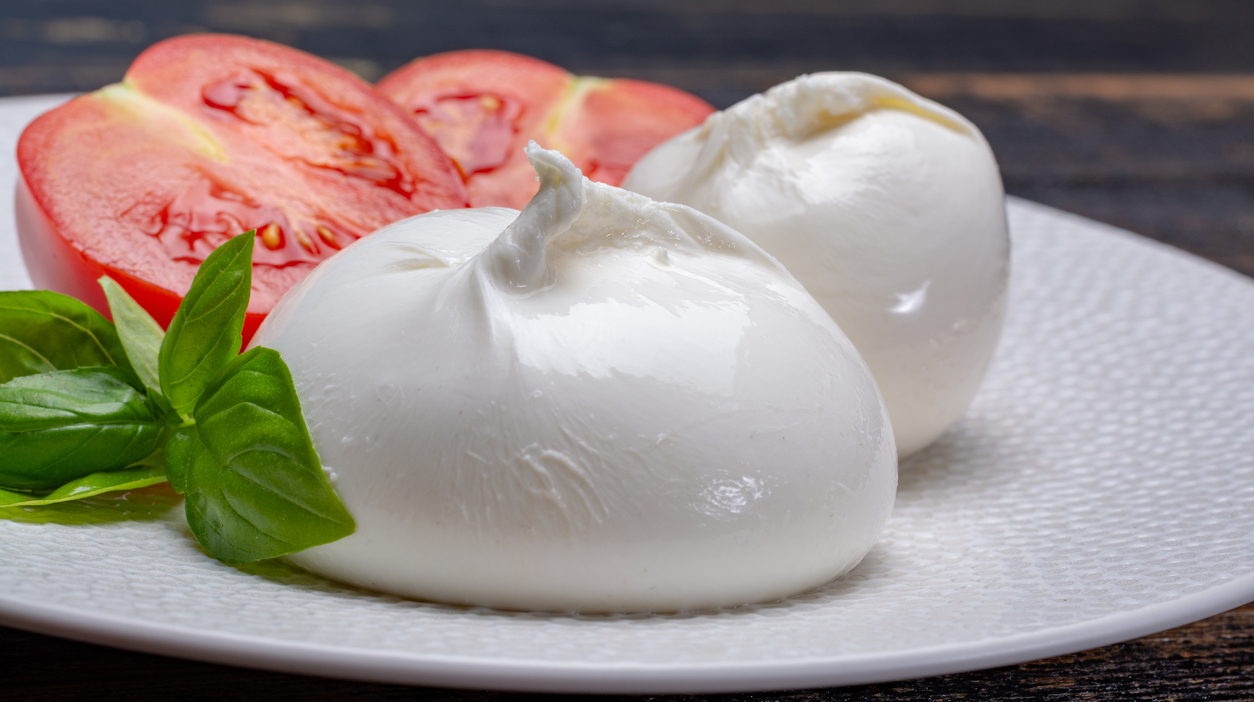Curd Mentality: The Gooey, Oozy, Creamy Appeal Of Burrata Cheese
We may receive a commission on purchases made from links.
Recently while out for a girls' night dinner, my friend encouraged me to order the burrata. It sounded intriguing, but I was still surprised by what actually arrived: a puffy little football filled with creamy cheese, which then spilled out into delicious gooeyness. It sent me down a rabbit hole.
I am relatively new to burrata, even though it's been around for nearly a century. The Oxford Companion To Cheese says it originated in Puglia—the heel of the Italian boot—sometime in the 1920s. Still, lately I feel like I'm seeing it everywhere, from being the star of a popular pizza YouTube video to a key component in the burrata-peach-arugula salad at my favorite neighborhood restaurant. So what exactly is burrata? I set out to learn more.
Here's a hint: burrata means "butter," an indicator that it's one of the creamiest members of the Italian cheese family. This Culinary Institute Of America YouTube video describes it as "recently been discovered in America," and explains that mozzarella is a pasta filata cheese, or a stretched- or strained-curd cheese. To make mozzarella, the mozzarella curd is stretched to form into a ball or whatever shape you like. To make burrata, that same stretchy curd is filled with a mixture of chopped up mozzarella scraps and cream called stracciatella, then tied with a knot on the top.
Said Lisa Futterman, manager of wholesale accounts at Pastoral Artisan Cheese, Bread & Wine, a popular cheese shop in Chicago: "So you get this outside coating of mozzarella stretched around more delicious creamy mozzarella." Wow. No wonder burrata is having a moment. The reveal when the interior cheese oozes out of the exterior cheese is truly a showstopper. And burrata also has a shelf life of only about 48 hours, which makes it even more of an exclusive delicacy.
Still, once the province of only restauranteurs, burrata has been recruited into people's at-home cheese arsenals. If you're looking for your own burrata, it's probably worth the trip to a high-end or specialty grocer to make sure you're getting a high-quality version that's not made by a machine. I for one would be thrilled if someone brought a platter of this out at a dinner party—and I'm already making plans for it at my next book club. But what's the best way to show off burrata? Do I have to smush it on top of a pizza like in that video?
Futterman advises: "I think the best way to use it is to serve it whole and serve it with accompaniments that it will be fun to eat with." So make a platter with your favorite add-ons, like roasted peppers, prosciutto, pesto, tapenade, and of course, crusty bread. "Then at the table, everyone breaks into the burrata with their different spreads and accompaniments and you have this wonderful interactive cheese experience." Futterman is apparently unafraid of germs or double-dippers, but I have to admit that sounds like a a fun appetizer activity.

I've seen burrata presented in a variety of different ways in restaurants, though. The Oxford Companion To Cheese advises, "Its mild, lactic creamy flavors benefit from simple pairings with fresh vegetables and fruits, and it works well on gourmet pizzas and on light pasta dishes." So you could also make a late-summer salad with tomatoes, black pepper, extra virgin olive oil and fresh herb. If you really want to try the burrata for a warm main course, go ahead and smear some on top of a margarita pizza with some fresh basil. Or serve it on top of a fresh tomato-sauced pasta, tossing it with some extra virgin olive oil.
Basically, burrata offers a ton of panache (along with quite a bit of deliciousness) with little effort beyond going out and buying it and setting up a nice platter. I can't wait to try this out at that book-club meeting, although I may have to experiment with a variety of different burrata adds beforehand to create my own perfect combo: Olives and prosciutto? Dried apricots and smoked almonds? Pesto and crusty bread? Looks like I'll just have to try them all.
